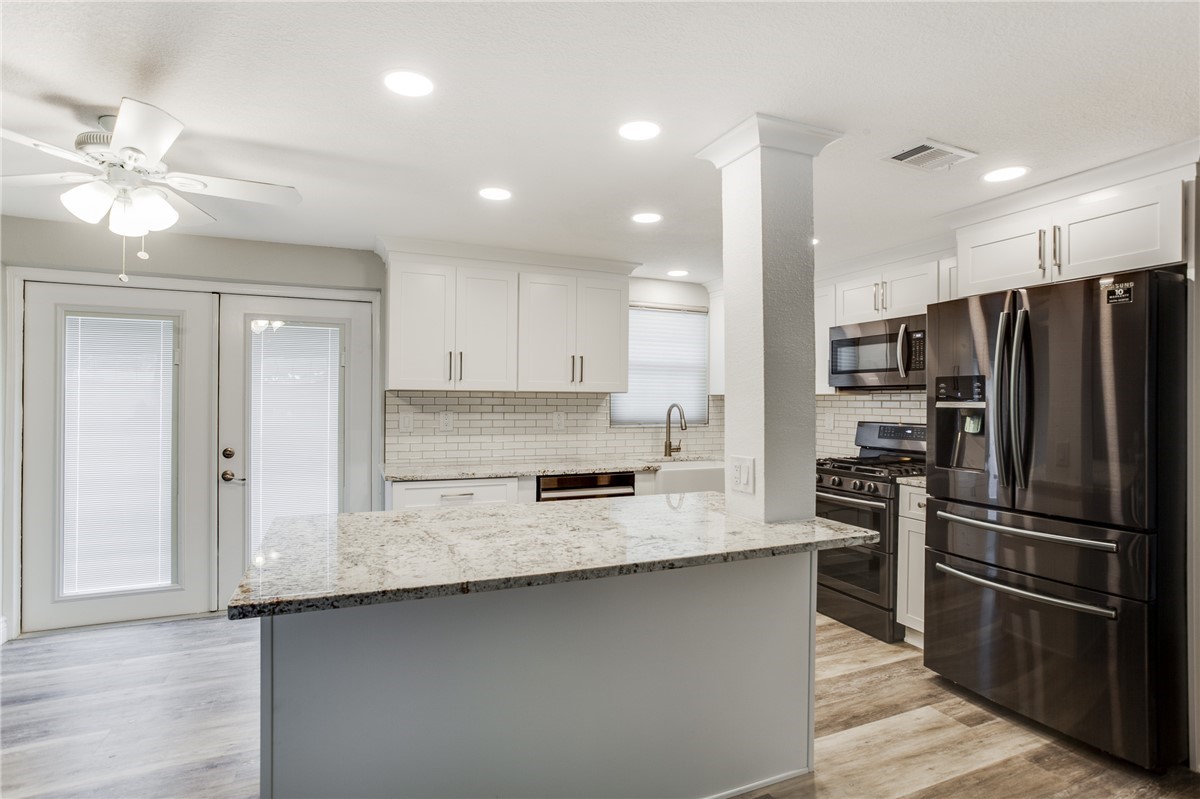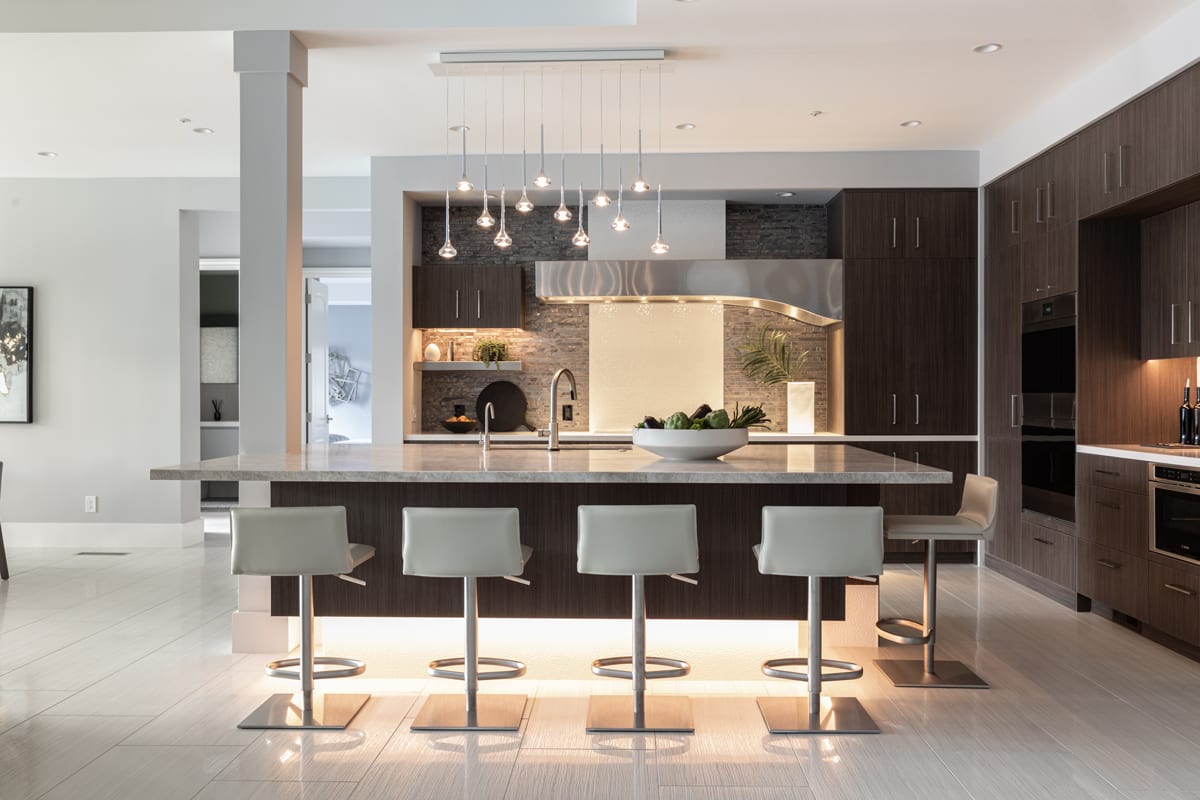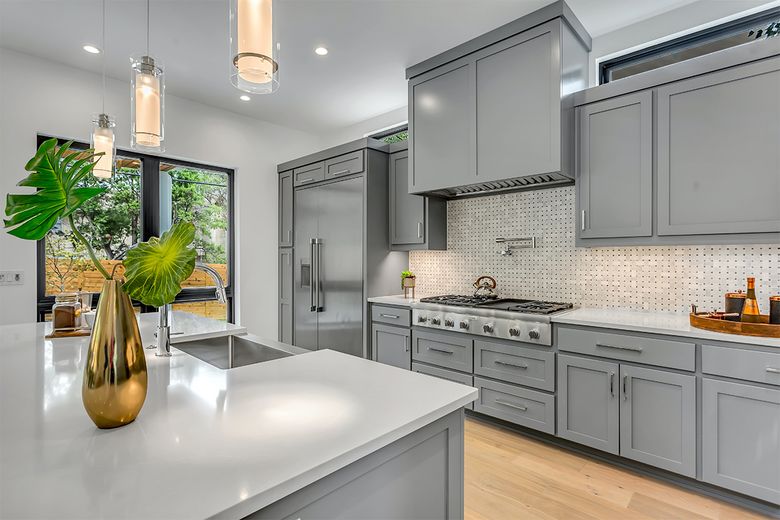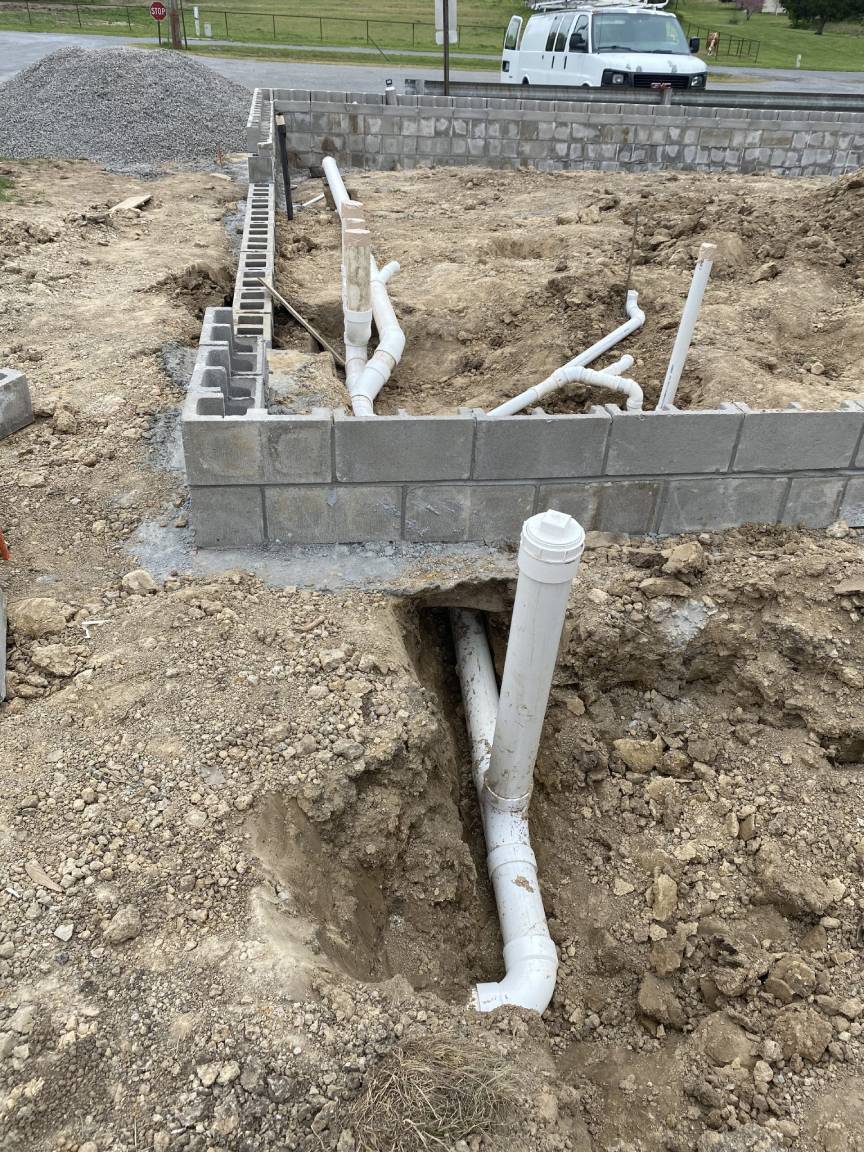Leading Trends in Cooking Area Makeover for a Modern Appearance
In contemporary kitchen improvement, several patterns attract attention as defining attributes of contemporary appearances and capability. The shift in the direction of open principle formats promotes seamless communication, while the combination of smart technology boosts performance in day-to-day tasks. In addition, using sustainable products reflects an expanding commitment to ecological stewardship, and strong color options enable property owners to reveal their uniqueness. As we explore these components further, it ends up being noticeable that the kitchen area is developing right into a room that is not just practical however also rich in personal value. What particular elements of these trends will form the future of cooking area design?
Open Concept Layouts
How can the charm of open idea designs transform the modern-day kitchen? Open up principle layouts have actually emerged as a specifying component in contemporary kitchen design, successfully bridging the space between cooking, dining, and living spaces.
Moreover, these designs improve natural light flow, developing a bright and inviting atmosphere. The tactical placement of peninsulas or islands can serve not only as practical food preparation areas however likewise as informal dining areas, motivating casual events. This flexibility supports a lifestyle that prioritizes connectivity and togetherness.
Additionally, open principle designs can boost the visual allure of a home. Attentively chosen materials and cohesive color combinations can combine numerous spaces, causing a harmonious aesthetic. Eventually, the open idea design redefines the contemporary kitchen area, transforming it into a multifunctional hub that mixes utility with an inviting setting. As property owners look for to create environments that reflect their way of livings, this pattern proceeds to gain traction in cooking area improvement projects.
Smart Kitchen Technology
The assimilation of clever kitchen modern technology stands for a considerable innovation in modern-day cooking rooms, revolutionizing how house owners connect with their cooking areas. This technology encompasses a selection of tools and systems developed to boost convenience, performance, and connection. Smart devices, such as fridges that check food inventory and suggest recipes, or ovens that can be controlled remotely, offer unparalleled simplicity of usage.
Voice-activated aides are progressively becoming staples in kitchens, allowing users to multitask while accessing recipes, setting timers, or managing various other clever gadgets. In addition, smart lights systems can be programmed to create the perfect setting for food preparation or amusing, reacting to both time of day and particular activities.
Energy-efficient smart devices also add to sustainability by lowering intake and maximizing performance. Smart thermostats can change temperature levels based on use patterns, while dish washers and cleaning equipments can be scheduled to run during off-peak power hours, additionally reducing energy expenses.

Lasting Materials
As home owners significantly prioritize ecological obligation in their makeover tasks, using lasting products has emerged as a key fad in kitchen improvements. These materials not just add to a much healthier earth yet additionally improve the visual allure and longevity of kitchen areas.
Bamboo, as an example, is gaining appeal due to its quick growth and renewability, making it an eco-friendly choice for kitchen cabinetry and flooring. Reclaimed wood is one more lasting alternative that adds personality and background to kitchen designs while minimizing the demand for new lumber. Furthermore, kitchen counters made from recycled materials, such as glass or longevity, offer both concrete and special visual appeal.
An additional element of lasting materials includes low-VOC (unpredictable organic compounds) paints and finishes, which assist why not try this out enhance indoor air quality. Homeowners are likewise transforming to energy-efficient home appliances that complement their sustainable cooking area designs while reducing energy costs.

Bold Color Design
Vibrancy and power have actually come to be crucial elements in modern kitchen design, resulting in a rise in vibrant shade systems that make a striking statement. Property owners are progressively moving far from typical neutral palettes, deciding instead for vibrant hues that reflect personal style and imagination. From deep navy blues to rich emerald eco-friendlies, these colors can change a cooking area into a dynamic and inviting room.
Accent wall surfaces painted in vibrant shades can serve as prime focus, while cabinetry in striking tones includes deepness and character. Combining these dazzling tones with contrasting aspects, such as metal coatings or all-natural wood, enhances the overall visual and creates an unified equilibrium. Additionally, colorful backsplashes and statement home appliances better add to the vibrant environment.
The fad in the direction of vibrant shade systems is not practically aesthetic appeals; it likewise enables for self-expression. By integrating one-of-a-kind color mixes, home owners can articulate their preferences and tastes, making their kitchen areas genuinely one-of-a-kind. As this trend continues to develop, making use of color in cooking area renovation mirrors a broader cultural change in the direction of uniqueness and customization in home design.
Multi-Functional Areas
Emphasizing originality in kitchen style, property owners are likewise prioritizing multi-functional spaces that deal with varied demands. The modern-day cooking area is no longer solely a location for meal prep work; it has developed right into a versatile hub for food preparation, entertaining, and family celebrations. This shift is triggering designers to integrate features that improve use while maximizing area efficiency.
Island resource counter tops have arised as a prominent focal factor, working as both a cooking area and an informal eating area. Including integrated storage options within these islands enhances performance while lessening clutter. Furthermore, open-concept designs are significantly preferred, permitting seamless changes in between the kitchen and adjacent living areas, which promotes social communication.
Versatile furniture options, such as extendable table and movable seats, additionally enhance the flexibility of the cooking area environment. Home owners are likewise integrating clever technology, enabling multifunctional home appliances that save time and simplify tasks.
Eventually, the pattern towards multi-functional spaces mirrors a growing desire for practicality and personalization in kitchen area layout, making sure that this important location of the home serves various objectives without compromising design or convenience.
Conclusion


In summary, the advancement of kitchen makeover trends reflects a shift towards contemporary appearances and performance. Open up concept layouts foster social communications, while wise cooking area technology enhances convenience and efficiency. The incorporation of lasting products shows a dedication to environmental obligation, and bold color pattern urge personal expression. The design of multi-functional areas, especially with flexible islands, enhances both energy and setting, ultimately adding to a vibrant and welcoming kitchen atmosphere.
In contemporary cooking area improvement, several trends stand out as defining attributes of modern visual appeals and capability. What details facets of these patterns will form the future of kitchen design?
The combination of clever kitchen technology stands for a significant development in modern-day cooking areas, changing exactly how property helpful resources owners connect with their cooking areas - Kitchen Remodeling Carbondale IL. As this pattern continues to develop, the usage of shade in kitchen makeover mirrors a more comprehensive cultural shift in the direction of originality and personalization in home layout
In summary, the development of kitchen renovation fads reflects a change towards contemporary aesthetic appeals and performance.